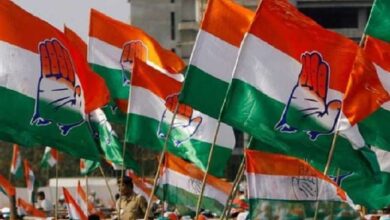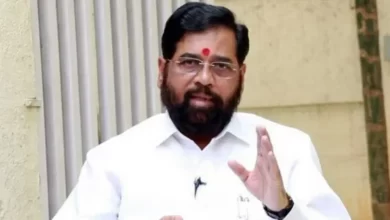India’s new technological challenge

[ad_1]
Arvind Mishra
Digital services play a vital role in providing quality of life to an individual or community. The complete lockdown of the Corona period has further reinforced the participation of digital services in citizen empowerment. The availability of citizen services on the digital system is increasing. But the imbalance in digital services on the basis of income, age, gender, education and geography is also clearly visible. With the expansion of the virtual world, the digital asymmetry poses a challenge to every individual and institution. In the current era of online education, there has been a huge increase in the number of children from cities to villages who are deprived of e-education simply because they do not have digital facilities. Similarly, there is a large proportion of those children who even after having digital facilities, there is a severe lack of information about their use.
It is not that this crisis is only in front of the online education system. The presence of the toiling laborers and the workforce active in the unorganized sector in the digital economy is still at a very low level. There is no doubt that the power of digital services makes them the most efficient vehicle of citizen empowerment. In such a situation, the solution to the challenges of the digital economy is possible only by achieving the desired goals of digital equality. Keep in mind that talking on mobile, sending messages is not the only sign of digital revolution. The digital world advances beyond its understanding with technology-based resources and services. It is also popularly called digital literacy. According to the American Library Association, digital literacy refers to the ability to create, develop and communicate information through information and communication technology that focuses on technical skills and understanding. It strengthens the educational, economic and health needs of individuals and communities as well as democratic rights. This is the reason why in the Universal Declaration of Human Rights, the United Nations has declared digital literacy as a basic need.
Today, the field of digital literacy is facing two types of challenges. First, the lack of necessary digital projects and resources from the reach of the lower strata of the society and second, lack of awareness about the application of digital services. The central government told the Parliament during the monsoon session that the number of internet users in the country is around eighty two crore. According to a report by the Internet and Mobile Association of India, in the next two years this figure will cross the 90 million mark. Rural India will have more internet users than cities in the next five years. In such a situation there is a need to create a sustainable digital ecosystem to meet the emerging demographic needs. According to experts, in order to take the benefits of Digital India to the lower strata of the society, there is a need to invest heavily on digital projects first. If we want to be among the top five digital economies of the world, then 35 billion dollars will have to be invested annually. Countries such as the US, UK, Japan and Germany, leading countries in digital economies, invest between one and a half percent of their GDP in digital infrastructure. Investment in digital infrastructure will need to be increased to develop a broadband base that can bridge the digital divide between metropolitan cities and remote villages.
The crisis of urban-rural, educated-non-educated and gender inequality in the current digital economy cannot be ignored. Given India’s geographical, economic, demographic diversity, digital services will have to be adapted to the local dialect, languages and cultural environment. Any effort for social justice would be incomplete without women. According to the National Family Health Survey, 60 percent of women in twelve states and union territories have never accessed the Internet. Similarly, UNICEF in one of its reports has expressed concern over the lack of place for children in digital literacy efforts. UNESCO’s Inclusive Development Goal-4.1 has expressed the apprehension that communities that lag behind in digital literacy are at risk of being left behind in many development paradigms.
Telecom companies and the banking sector have a major role to play in the digital economy. Barring public sector banks and telecom companies, the focus of private sector undertakings towards digital literacy has been negligible. Digital education appears to be purely a matter of technical skill in government policies. To increase the proportion of digital literacy, the level of education has to be raised along with economic security. For a section that is deprived of basic education and financial security, what can be better than digital literacy paper planning. For the most needy section of the society, Digital India is still limited to the convenience of talking on the mobile and viewing the picture on the screen. After the launch of Digital India program in the year 2015, National Digital Literacy Mission and Pradhan Mantri Gramin Digital Saksharta Abhiyan were launched. In this, digital skills are to be provided to the Anganwadi and Asha workers working at the Panchayat level. So far one lakh fifty seven thousand gram panchayats have been provided high speed internet facility in the country. However, the government had set a target of connecting 2.5 lakh villages with the Bharat Net optical fiber project by March 2020.
Talking about Jan Dhan, Aadhar and mobile based services, its biggest beneficiaries are below poverty line and unorganized sector workers. Through Jan Dhan, more than 400 million people have been linked with banking, but a large part of the workers are unable to maintain their association with bank accounts and mobile numbers linked with Aadhaar for long. The lack of other information along with the crisis of livelihood are important factors behind this. In such a situation, workers in the unorganized sector face the most challenges in availing One Time Password (OTP) based services. It is worth mentioning here that the mobile number attached to Aadhaar and bank account is becoming increasingly essential for cash benefit transfer and to be associated as a beneficiary of any scheme. The number of users of online banking in the country has still not reached the level of fifteen crores. This is not a very attractive figure for a population of over one hundred and forty crores. A report by Facebook and Boston Consulting Group said that more than fifty percent of consumers expressed dissatisfaction with online banking. The biggest reason for this is hidden rates, lack of trust and the contradictory nature of information provided by the service providers.
Without digital literacy, society would not only be deprived of the benefits of a knowledge-based economy, technology-based division could create new crises in the society. Obviously, it is only through public and private partnership that the desired goals of digital literacy will be achieved. If we succeed in doing this, we will see a democratic face of Digital India which will be effective in giving a more inclusive and sustainable cover to community development.
The post India’s New Tech Challenge appeared first on Jansatta.
.
[ad_2]






